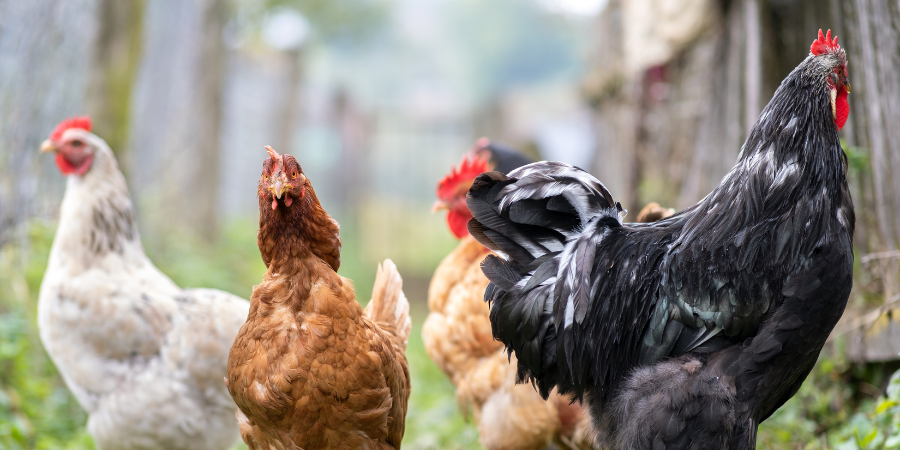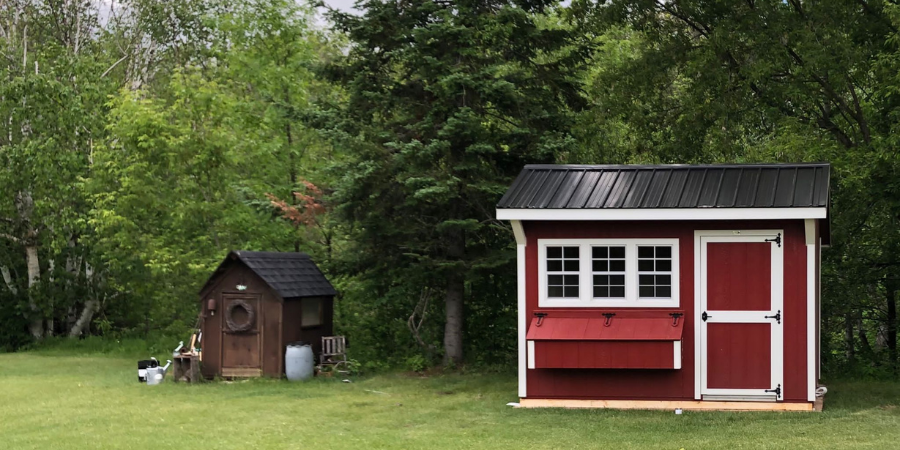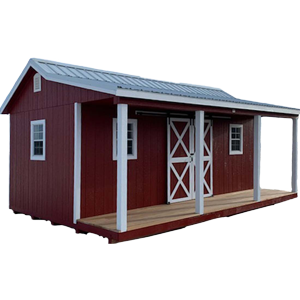Top 3 Factors that Go Into the Cost of Raising Backyard Chickens
by Dakota Storage Buildings, on April 26, 2023

If you are interested in raising chickens, calculating the estimated cost is one of the first steps. While costs can vary based on multiple factors, having a basic understanding is crucial before you purchase any chickens. Three of the greatest costs are actual chickens, coops, and feed. While the price of chickens and the coop is an initial upfront cost, the feed will be something you must purchase for the rest of your flock’s life. Let’s look at each category more in-depth to get a better idea of the cost of raising backyard chickens.
How Much Do Chickens Cost?
Raising chickens is a great hobby and a perfect place to begin if you are interested in homesteading. They are easygoing, readily available animals that make great starter animals for beginners. When it comes to raising chickens, it is important to understand the financial undertaking that comes with this hobby. A flock requires specific items to have a safe, happy life. Simply putting up a backyard fence and feeding them once a day will not cut it. While the total cost of raising backyard chickens can vary based on location, estimating expenses is a great idea to ensure you are ready for the cost.
Top Cost Factors of Backyard Chickens
There are several upfront and continual costs associated with raising chickens; however, these three main factors will take up most of your budget. Buying the chickens and coop is essential to begin the process and purchasing feed will be a continual necessity.
1. Purchasing Chickens
When you are ready to purchase your chickens, several options can affect your budget. Buying sexed chicks is a popular choice because you will be able to raise the chicks into adulthood. Make sure the chicks are sexed because it is the only way to make sure you will get hens. Sexed chicks can be purchased for as little as $3 each. If you want a flock of eight chickens, that would be $24 in total.
If raising chicks does not interest you, you can buy “started pullets.” These hens are several months old and will be ready to lay eggs much sooner than purchasing chicks. Individual pullets can cost anywhere from $20 to $50 per bird. While you can move these chickens straight into the coop and get eggs sooner, this is a more expensive option for homesteaders.
Further, the breed of chicken you choose to raise can affect the price per bird. Exotic chickens can even be thousands of dollars for one bird. However, there are popular, affordable breeds that are easy to purchase. Rhone Island Red, Golden Comet, and Buff Orpington are just a few of the standard, affordable breeds you can choose from.
2. Investing in a Coop
The price of a chicken coop can vary drastically. No matter what your budget is, there is a coop that will fit your desired cost. DIY coops are a great way to save money, but they can lack long-term durability. Buying a coop from a professional manufacturer gives you peace of mind that the coop will last for years. These coops will last for years and may even be the only coop you ever purchase.
Another factor that can affect the cost of a coop is the size. Your number of birds will greatly affect the coop size you need. Free-range coops require that there are four square foot feet per bird. However, this is acknowledging that your flock will spend over six hours each day outside. Meanwhile, if you plan on having an enclosed coop, you will need 10 square feet of space per chicken inside of the coop. The attached run must provide at least eight square feet of space for each bird.
Remember that if you purchase young chicks, they cannot live in the coop immediately. You must also invest in a brooder where the chickens will grow and mature over the first six weeks. These do not have to be elaborate and can even be created by attaching a heat lamp to a recycled tub.

3. Purchasing Feed
Your flock will need fresh feed every day. Just like any other pet, choosing the best feed can make their life happier and healthier. Mature hens may need around .25 pounds of feed each day, while chicks may need .10 pounds. Free-range chickens may not eat as much because they are able to forge for food during their time in the yard. Chickens are omnivores so they may find something in your backyard that they enjoy just as much as their feed. A 50-pound bag of feed can cost anywhere from $10 to $35. The number of chickens you own will determine the amount of feed you need to purchase.
Variable Costs
While those three costs take up a large portion of your budget, other variable costs must be considered. Providing basic necessities and paying for potential healthcare can be costly if they are not originally factored into your budget.
Water
Just like feed, hens will need water to survive. Having a continuous water supply is crucial. During the cold months, you may even need a water heater to keep the water from turning to ice. Water heaters can be anywhere from $30 to $60.
Bedding
Bedding and nesting boxes help chickens be happy in their coop. Most bedding can be purchased where you would purchase feed. Eight chickens would need around eight bales of straw bedding. This helps keep your hens comfortable throughout the year.
Labor
Your time and energy may not be monetary, but they should be considered before you decide to raise chickens. While these animals are not high maintenance, you must sacrifice time throughout the day to feed them, care for them, and clean out their coops. If you do not like the interruption in your schedule, then raising chickens may not be the best idea for you.
Miscellaneous
As you raise chickens, one or two may get sick and need further care. Veterinarian and medicine costs should be factored into the equation as well. While these trips will hopefully be few and far between, it is better to prepare your budget to include trips to the veterinarian.
Are You Ready for Backyard Chickens?
After determining your budget for raising chickens, you can decide if it is the right choice. Raising chickens may not always be cheap, but it is gratifying. If you decide to take the next step on your chicken-raising journey, we are here to help. With our free guide, you will be able to prepare for the arrival of your chickens properly.

























